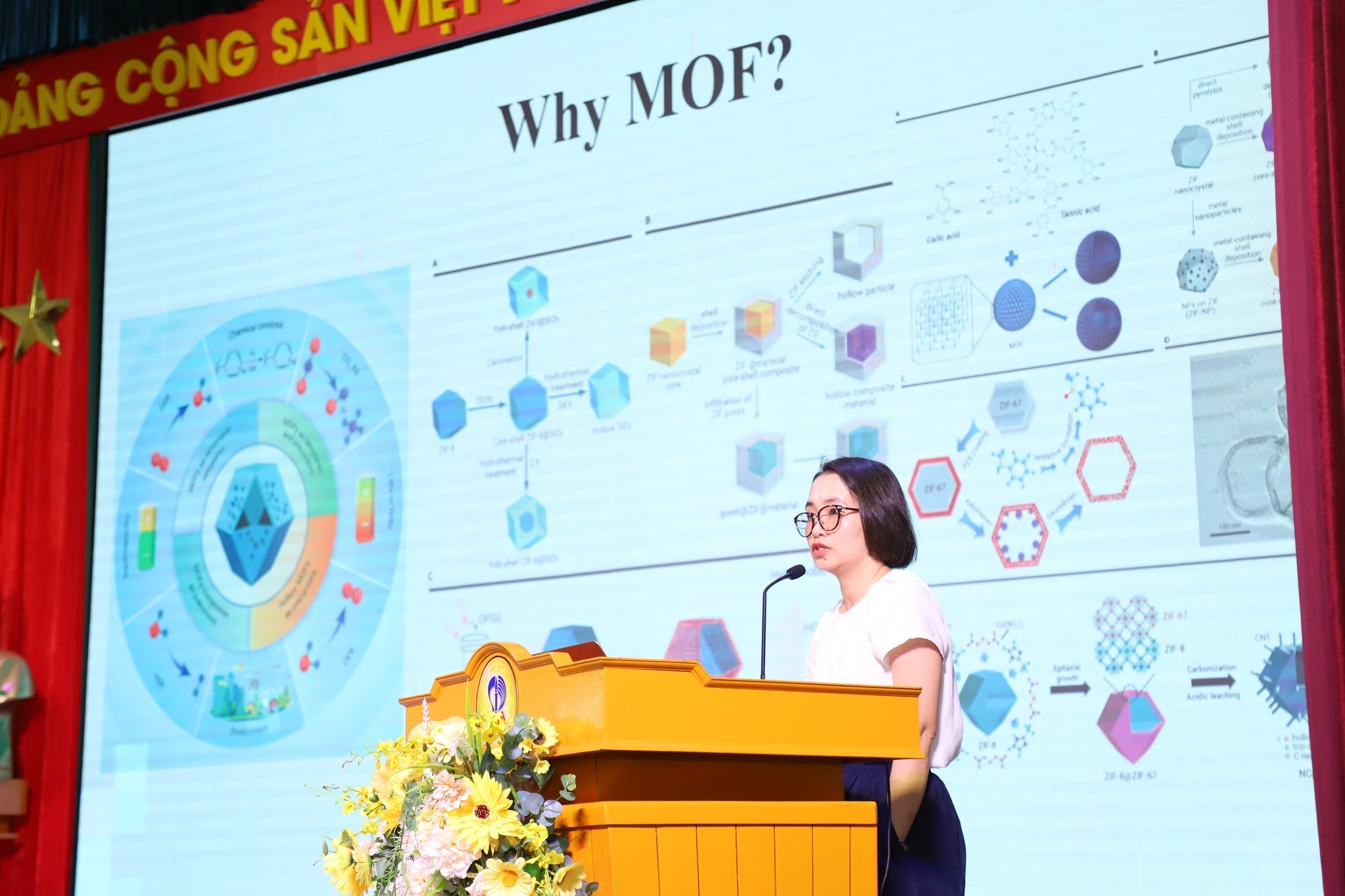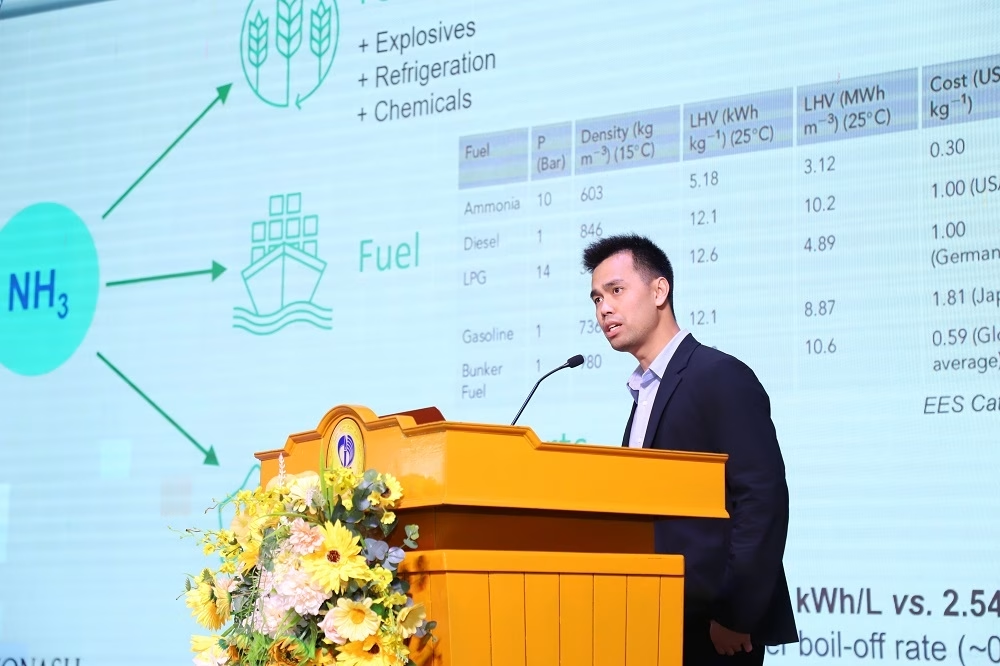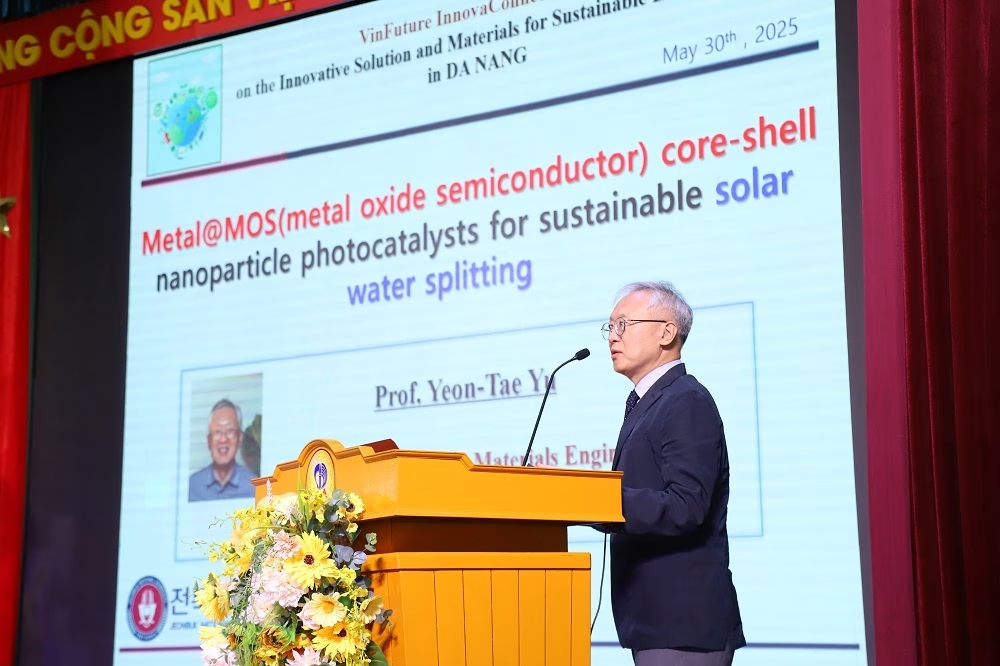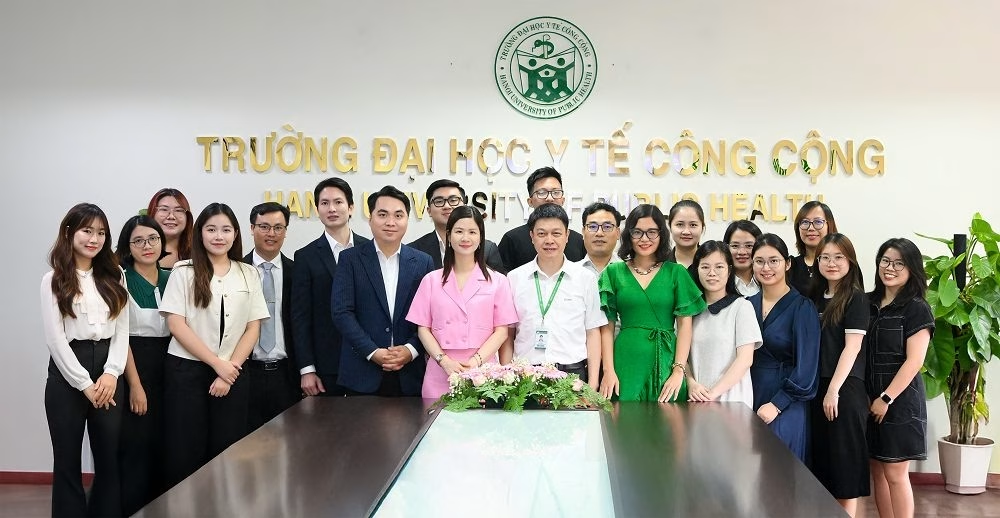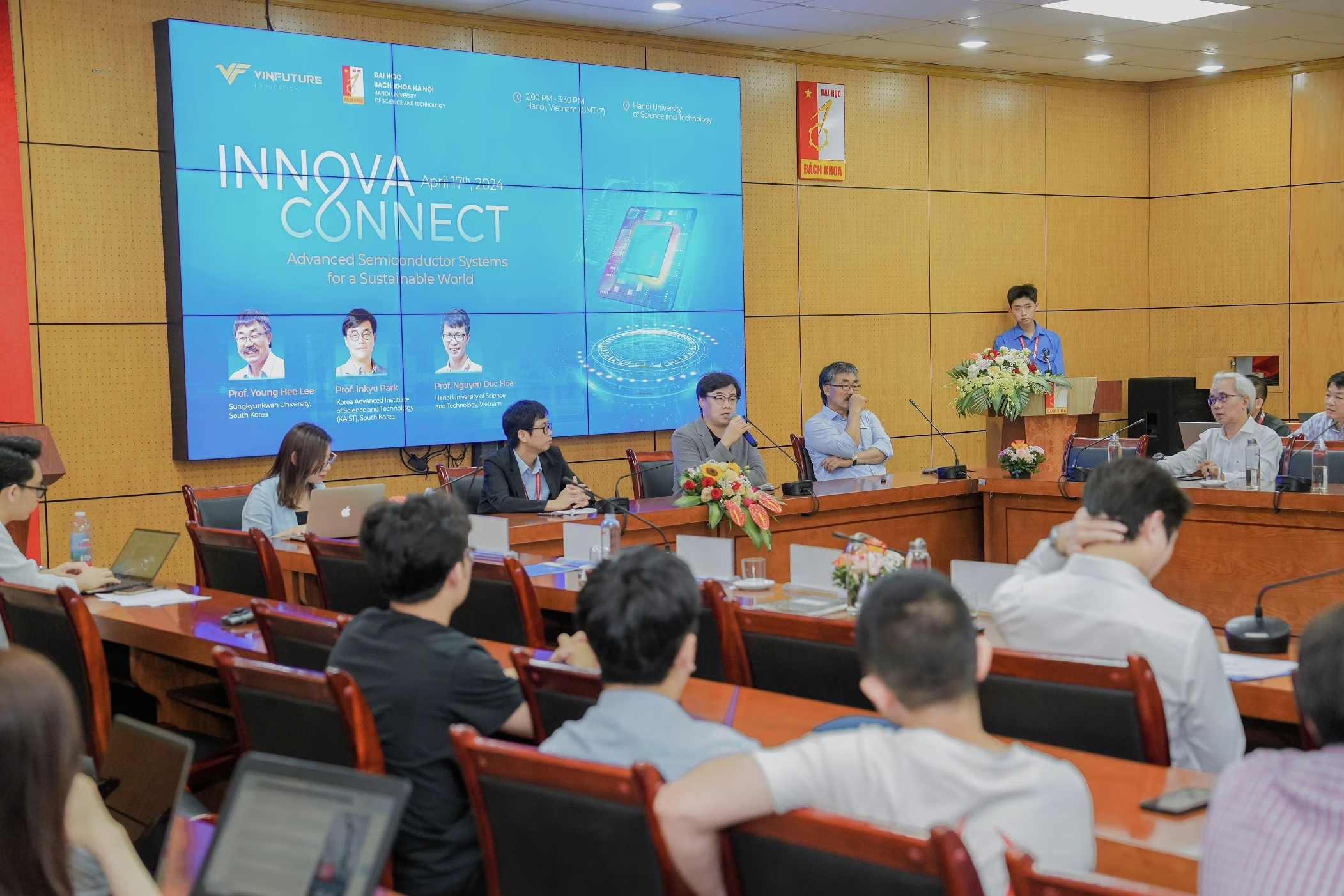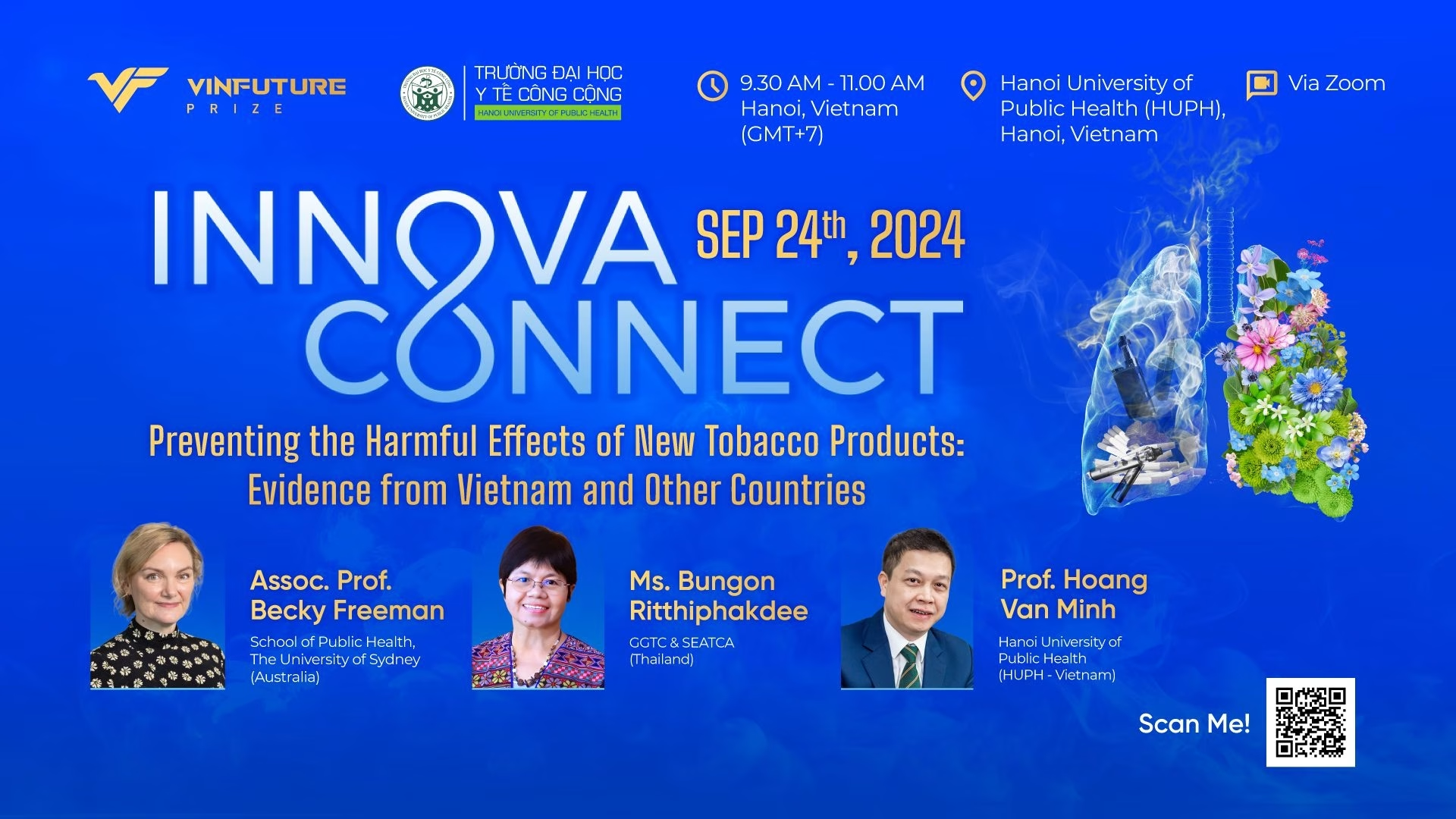Q: Could you share the content of your presentation at Hanoi University of Science and Technology and the significance of this topic?
Professor Park: In my presentation, I outlined the technical advancements and new technologies pioneered by our research team in the realm of advanced sensors, specifically focusing on gas sensors, or electronic noses. I highlighted the significant role these sensors and their integration with semiconductor devices play in everyday life and industrial settings.
Our research underscores the critical importance of gas-sensing technology both in domestic environments and throughout the manufacturing sector. We are concentrating on the development of low-power gas sensors capable of detecting various toxic gases commonly found in residential areas and industrial sites such as semiconductor and oil refineries. The manufacturing processes in these industries emit numerous toxic gases, necessitating the use of multiple gas sensors for real-time monitoring. Presently, most commercially available gas sensors are bulky and costly, which constrains the practical implementation of real-time toxic gas monitoring systems. Our objective is to create a compact, energy-efficient sensor that can be embedded into mobile devices or wearable technology, enabling individuals to monitor the toxic gases that impact their health.
In particular, we are advancing a highly integrated gas sensor utilizing a cutting-edge micro-LED-based technology. This method involves using a miniature micro-LED to illuminate the sensing material, which exhibits varying light responses depending on the type of gas present in the environment. We employ deep learning algorithms to analyze these responses and accurately determine the gas types.
Q: The theme of the event is about semiconductors and a sustainable world. Why do you think these topics are important and why should people care more?
Professor Park: The semiconductor industry heavily relies on various toxic chemicals, including corrosive gases and processing chemicals, throughout its manufacturing processes. Consequently, the monitoring of these substances in manufacturing facilities is essential for safeguarding worker health.
As the industry progresses, the dimensions of semiconductor devices continue to decrease, necessitating enhanced quality control in manufacturing processes. This requires stricter control over toxic gas emissions, as even minimal amounts can compromise product integrity and lead to device failures. Thus, the semiconductor industry requires an extensive array of gas sensors and must adopt sustainable practices to ensure both a safe working environment and the production of high-quality products.
Continuous environmental monitoring, particularly of air quality, is vital for sustainable development. Keeping the environment clean is crucial for long-term industrial growth, underscoring the importance of developing high-quality, cost-effective, and multifunctional gas sensors.
Q: During your visit to Hanoi University of Science and Technology, what knowledge and insights do you hope to share about the potential of Vietnam’s semiconductor industry? How do you envision your involvement impacting the semiconductor ecosystem in Vietnam?
Professor Park: I aim to disseminate my research not only among fellow scientists but also to stakeholders in both public and private sectors. Specifically, I am keen to engage with representatives from Vingroup, given their substantial investments in the automotive sector. I also believe they might be interested in exploring a new venture into the semiconductor industry.
In the context of automotive manufacturing, particularly at VinFast, there is a significant requirement for gas sensors. These sensors are essential in the development of electric vehicles and in ensuring the safety of electrical power systems. Monitoring batteries is crucial since they can experience thermal runaway, which can cause fires and explosions. Devices that detect toxic gases emitted by batteries are necessary to prevent such incidents, making VinFast a potential stakeholder in sensor technology for vehicle monitoring.
Additionally, motorcycles, the primary mode of transportation in Vietnam, emit considerable exhaust fumes, making air quality control vital. Integrating gas sensors into mobile phones or wearables could significantly enhance the quality of life, benefiting not just industry workers but also the general populace.
Furthermore, Vietnam is expected to become one of the largest manufacturing sites of semiconductor chips. I believe that Vietnam will become the key player in not only the manufacturing but also the research and development of semiconductor. I hope that my knowledge and experience about the integrated sensors with semiconductor devices will be helpful for the Vietnamese semiconductor engineers.
Q: You have taken the time to research Vietnam and our company. In your opinion, what are the strengths and development opportunities for the semiconductor industry in Vietnam?
Professor Park: In the coming era, Vietnam must prioritize development within the semiconductor industry. Korea, as a leading force in semiconductors, presents a strong potential for collaboration with Vietnam.
Vietnam’s youthful population and robust education system are key factors in fostering a thriving semiconductor industry. Additionally, Vietnam’s expanding manufacturing base creates a unique opportunity to attract investment from global semiconductor corporations.
A collaborative effort between our two nations will yield mutual benefits. Vietnam gains the opportunity to cultivate a high-tech industry, generate abundant job opportunities, and stimulate economic growth. Korea, in turn, would expand its market reach and tap into Vietnam’s skilled workforce.
Vingroup’s current expansion into automotive manufacturing suggests potential interest in entering the semiconductor sector. By strengthening Vietnam’s research capabilities in this field, we lay a strong foundation for the development of Vietnam’s next-generation industries.
Q: Vietnam is a relatively young country in the semiconductor manufacturing field. What are the emerging trends or technologies in the global semiconductor industry that Vietnam should focus on to take advantage of, according to Professor?
Professor Park: Several significant trends are shaping the semiconductor industry, but three hold exceptional promise:
- Semiconductor devices optimized for AI processing: The surging demand for artificial intelligence (AI) applications necessitates specialized semiconductor devices capable of handling complex AI algorithms. Such semiconductors provide the necessary processing power and memory required to handle complex computations associated with AI tasks. They are designed to optimize AI functions like machine learning and deep learning, enabling faster and more efficient processing compared to general-purpose semiconductors.
- High-speed, high-memory GPUs: As big data and machine learning become ubiquitous across industries like healthcare, finance, and manufacturing, there’s a critical need for GPUs (graphics processing units) boasting superior computing power and expansive memory to facilitate rapid data storage and access.
- Ultra-low-power ICs: Application-Specific Integrated Circuits (ASICs) with reduced operating power is essential for applications such as IoT devices, smart sensors, and wearables. These ICs are designed to perform computing tasks directly within the sensor, minimizing the energy required to transmit data to a central processor. This approach is beneficial for battery-powered and remote sensing applications, where conserving energy is crucial.
These trends are at the forefront of the Korean semiconductor industry, and I firmly believe Vietnam would gain significantly by focusing research and investment efforts in these areas to propel its own semiconductor sector forward.
Q: We have discussed the opportunities, strengths, and potential of Vietnam. What are the challenges or limitations that Vietnam may face in developing its semiconductor industry? Do you think these challenges can be overcome, and can they be overcome in the short term or will it take a long time?
Professor Park: Overall, I am very optimistic about the future of the Vietnamese industry including the semiconductor sectors.
To accelerate development, I believe Vietnam should prioritize strengthening collaborations with leading companies internationally. Close partnerships with top corporations in Korea, the US, and Europe would facilitate rapid adoption of advanced technologies.
Fostering an open platform for cooperation is key. My recent experiences with China highlight their substantial investments in scientific research and international partnerships. They actively promote exchange by sending experts abroad and welcoming foreign specialists.
Vietnam can unlock rapid growth for its semiconductor industry and related research by prioritizing investment in similar initiatives—exchanging knowledge and fostering collaborations on an open, international stage.
Q: Can you share whether there are any specific research areas or technological breakthroughs in the semiconductor field that you believes hold promise for promoting sustainable development goals?
Professor Park: Currently, the semiconductor industry is conducting a lot of research and development, especially in the field of sensors and internet of things (IoT). Many scientists are focusing on researching neuromorphic devices (devices that simulate the human brain) and low-power Application-Specific Integrated Circuits (ASICs).
Neuromorphic devices are different from traditional Von Neumann computing architectures in that they mimic the intricate workings of our sensory system, nervous system, and brain activity. This allows for significantly more energy-efficient data processing and enhances the transmission of data from the sensor to the server for further analysis.
As a result, neuromorphic semiconductors/processing play a crucial role in advancing sustainable development by making data processing more energy efficient and effective.
Furthermore, low-power ASICs are empowering the concept of in-sensor computing. Rather than transmitting data to servers for processing, we can now embed small, energy-efficient processors with powerful capabilities directly within sensor nodes. This in-sensor computing approach holds the potential to revolutionize how we manage and process data.
In conclusion, I believe neuromorphic semiconductors and in-sensor computing, driven by ultra-low-power integrated circuits, represent vital areas of research for achieving our sustainable development goals.

